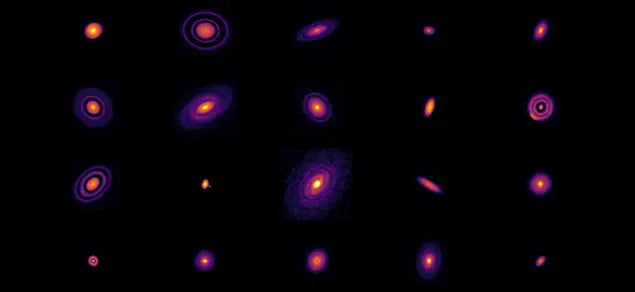Introduction
The Solar System, our cosmic neighborhood, has captivated human imagination for millennia. From the ancient astronomers who mapped the stars to modern scientists who send spacecraft to the farthest reaches of our system, the quest to understand our origins is a journey that continues to fascinate us. But how did the Solar System come into existence? What cosmic events led to the formation of planets, moons, and other celestial bodies? Let's delve into the scientific theories and evidence that attempt to answer these intriguing questions.
The Nebular Hypothesis: A Timeless Theory
One of the most widely accepted theories explaining the origin of the Solar System is the Nebular Hypothesis. Proposed initially by Emanuel Swedenborg, Immanuel Kant, and Pierre-Simon Laplace in the 18th century, this theory suggests that the Solar System originated from a giant rotating cloud of gas and dust, known as a solar nebula.
The Collapse and Spin
About 4.6 billion years ago, a disturbance—possibly caused by a nearby supernova—triggered the gravitational collapse of a region within the solar nebula. As the cloud contracted, it began to spin faster and flatten into a disk, conserving angular momentum. At the center of this disk, the protosun began to form.
Birth of the Sun and Planets
As the protosun accumulated more mass, it eventually reached temperatures high enough for nuclear fusion, giving birth to our Sun. Meanwhile, in the surrounding protoplanetary disk, solid particles began to collide and stick together, forming planetesimals. Over time, these planetesimals coalesced to form the planets, moons, and other bodies in the Solar System.
The Planetesimal Hypothesis: A Modern Twist
While the Nebular Hypothesis provides a broad framework, the Planetesimal Hypothesis adds more detail to the story. It suggests that planetesimals, once formed, went through a series of collisions and mergers, eventually forming protoplanets. These protoplanets then underwent further processes like differentiation (separation of layers) and outgassing (release of gases) to become the planets we know today.
The Role of Water and Organic Molecules
One of the most intriguing aspects of Solar System formation is the origin of water and organic molecules, the building blocks of life. Recent studies suggest that comets and asteroids, remnants from the early Solar System, could have delivered these essential elements to Earth. This idea adds another layer of complexity to our understanding of how the Solar System—and potentially life itself—came to be.
The Importance of Space Missions
Space missions like Voyager, Pioneer, and more recently, the Juno and Perseverance missions, have provided invaluable data that help refine our understanding of the Solar System's origin. These missions offer direct observations and samples that test and challenge existing theories, pushing the boundaries of what we know.


